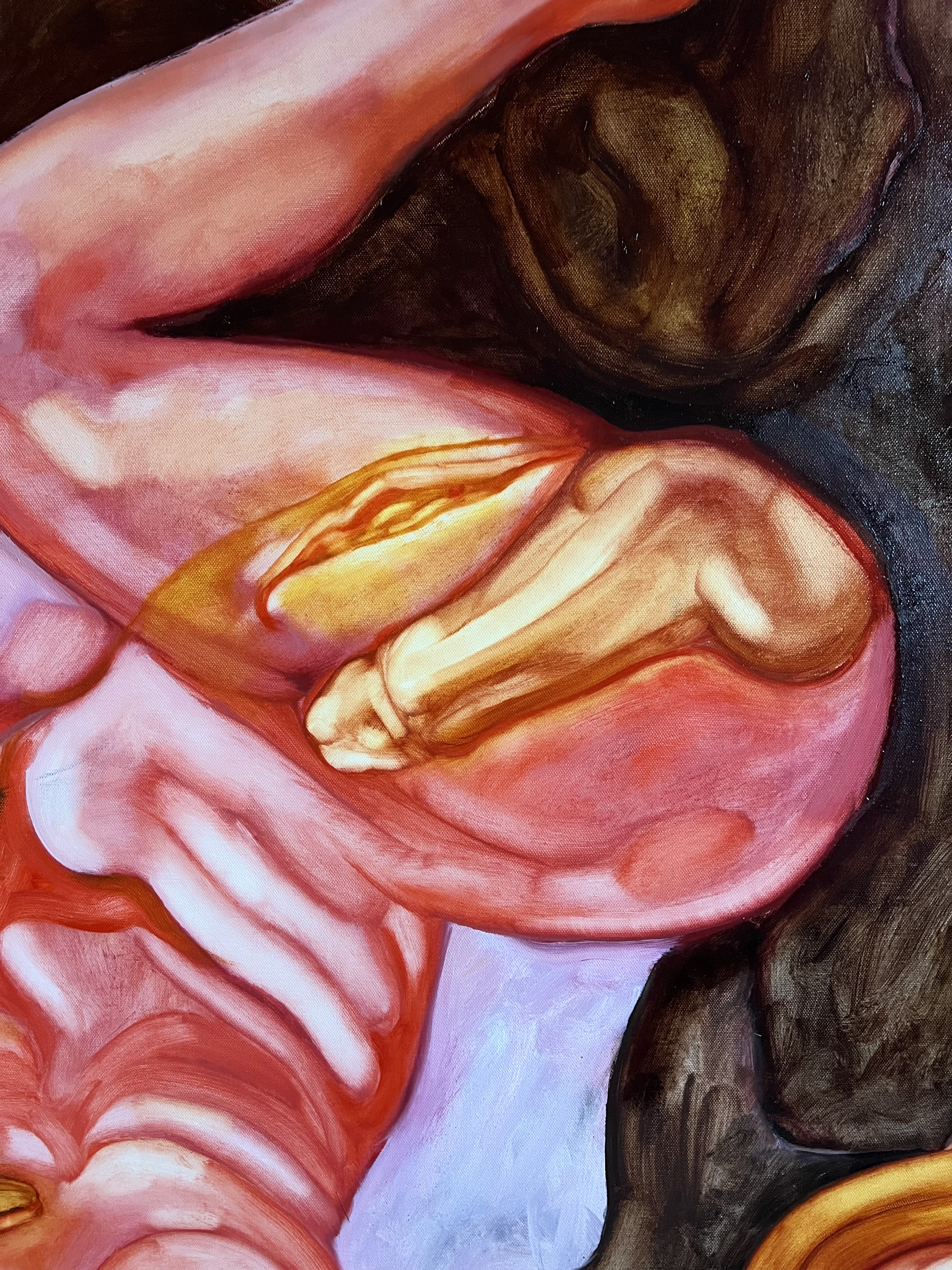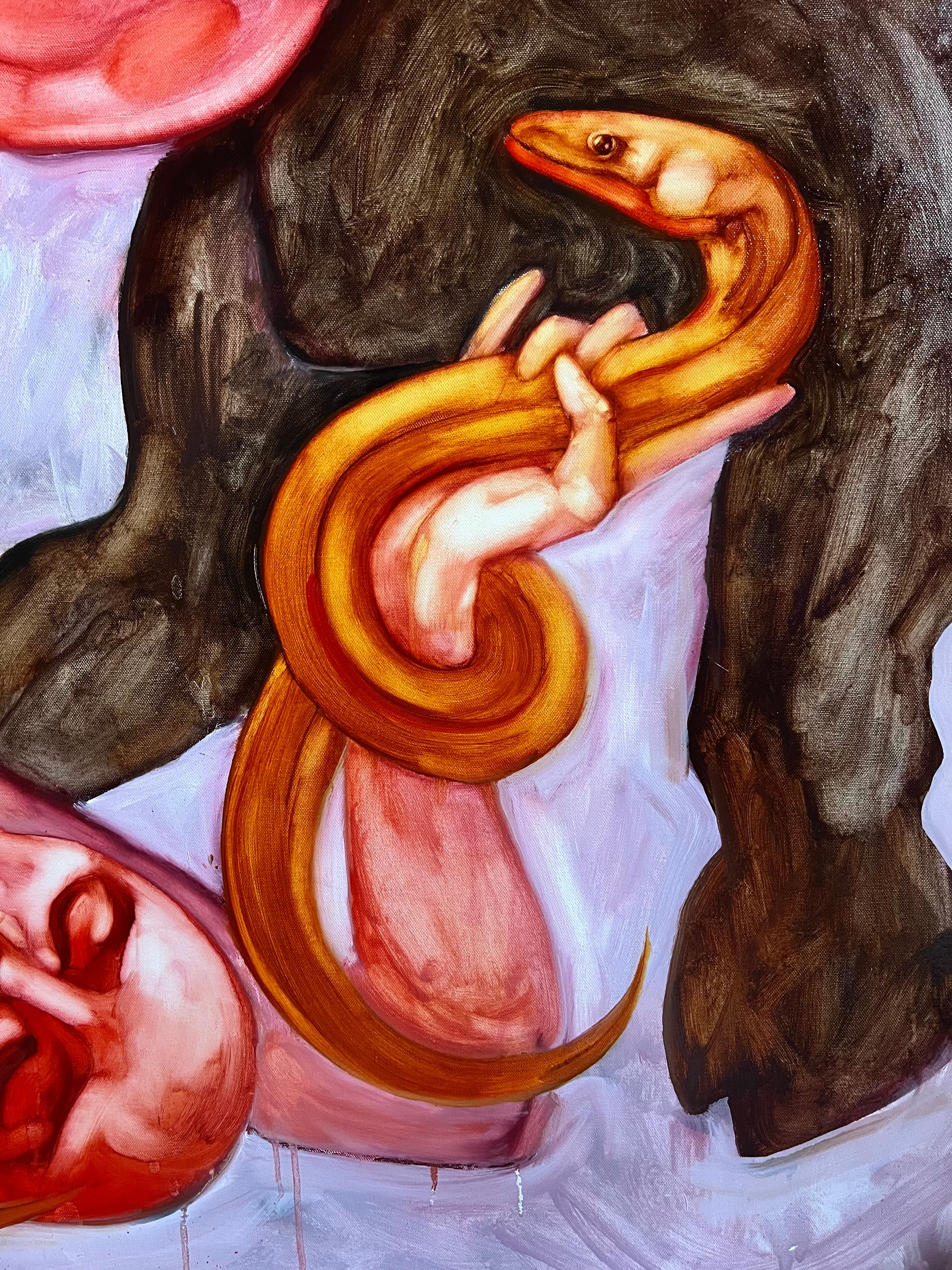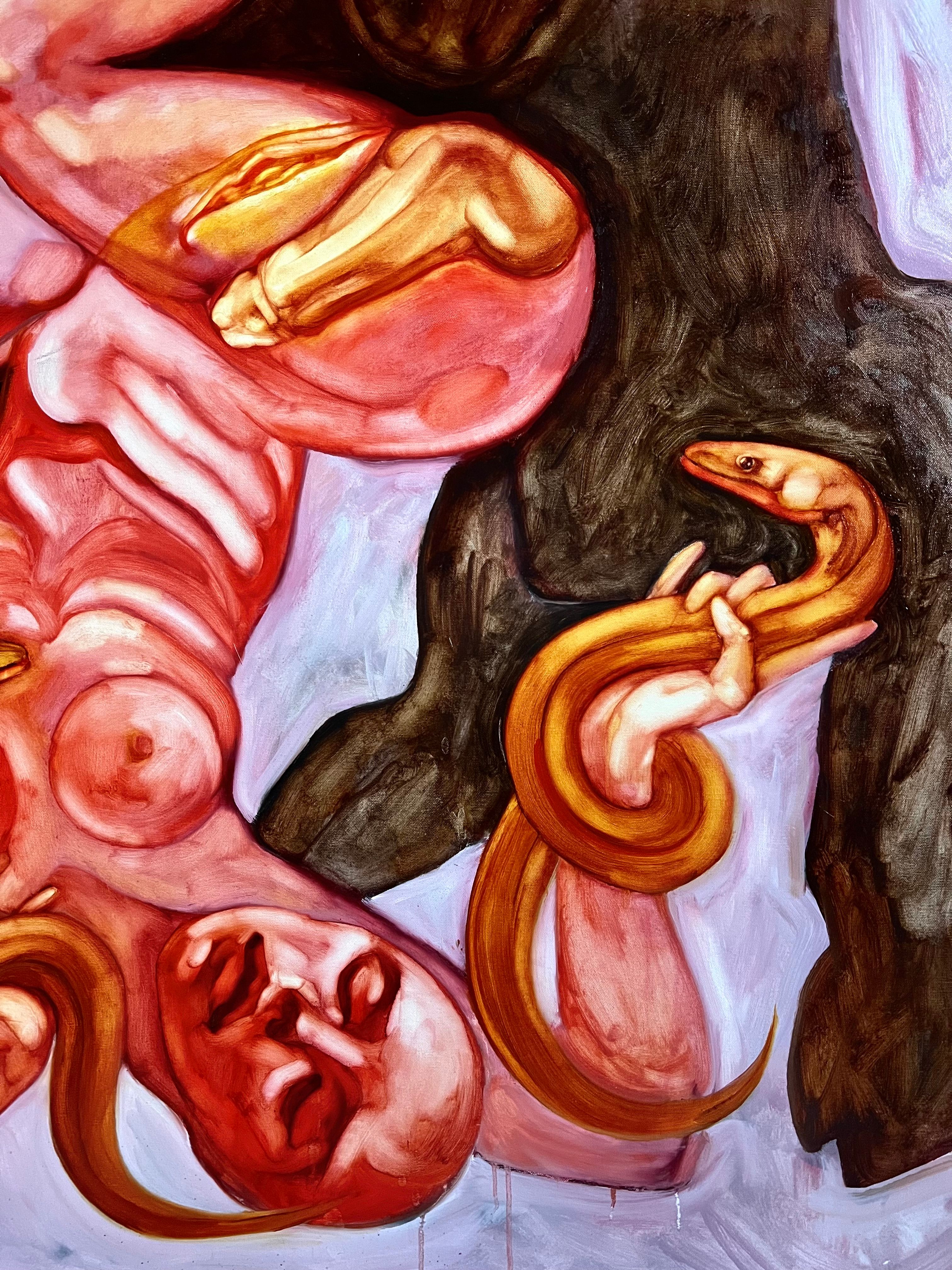The secret Pasiphaë whispers in ecstasy a moment before the sexual maturity of the golden eels


Oil on canvas, 2025 160x120
Private gallery, London
Available lot
The life cycle of the Eel, Pasiphaë celebrating her name.
Golden eels. Catadromous erotics
The sexual biology of the eel remained obscure for a long time. Researchers could not locate fully developed sexual organs, eels were suspected of hermaphroditism, and the eventual scientific picture proved more intricate than expected.
A famous episode concerns the young Freud in Trieste, dissecting hundreds of eels in search of male gonads and finding nothing at all, see the biographical accounts of the “eel episode”. The eel enters the history of science as the animal of the absent phallus, a disappointed promise of biology.

Most strikingly, no one has ever directly observed eel copulation. Over the course of its life cycle, this species traverses all environments: salt water, fresh water, soft riverbed mud, and at times moist land during nocturnal foraging. Beyond its dense mythopoetic charge, the eel carries a form of eros that consistently exceeds our capacity to imagine it.
In Egyptian tradition, the eel gravitates towards Atum, the self engendering god rising from the silt of Nun’s eternal chaos. Within cultural symbolism it usually sits outside the straightforward line of phallic emblems; it is read as an autonomous, self generating creature whose erotic regime is not reducible to a human code.
In the Sargasso Sea, the cradle of all European eels, in the quiet warm waters of the Atlantic near the Bermuda region and along the path of the young Gulf Stream, fragile leptocephali are born. Carried by the currents, they reach the estuaries of European rivers, where they transform into glass eels, and later into the so called yellow stage.

The yellow eel is a prolonged phase, roughly 3 to 20 years, of growth and accumulation that precedes any sexual activity. Sex is determined in fresh water and depends on population density and environmental conditions; the river itself, the ecosystem itself, participates in the decision.
Once the eel’s body has fed and thickened sufficiently, silvering begins: pigmentation changes, the eyes enlarge, the intestine atrophies, autophagy is triggered. The whole organism becomes a living reserve of energy for the return migration towards the Sargasso Sea, a journey that ends in death.
The eel stops feeding and moves towards a single act of reproduction, which, according to current hypotheses, takes place at considerable depth, beyond the reach of direct observation.

Pre heroic Prometheus
A familiar motif, the intercourse with the bull, is here redirected towards uncharted deep sea passions, and the interpretation of one of the most frequently revisited themes in my practice is shifted.
The previous Pasiphaë was painted for the collection "The Method of Mondino and Eleven Beauties in the Landscapes of Etruria" https://www.gertot.com/prjcts/the-mondino-method-and-eleven-beauties-in-the-landscapes-of-etruria and examined violence and mercy, the body as an object of anatomical and judicial scrutiny.
For me, the myth of Pasiphaë functions as a high speed train that carries current inner processes and shifting points of focus. In Eels, Pasiphaë, under the mass of the bull, deciphers the truth of her own name.

Her name is formed from πᾶσι, “to all, everywhere”, and ˊφᾶος “light, radiance”. The painting takes this etymology literally; this is not a private scene of deviance, but a study in universal light passing through the fluids of a particular body, its mucus and blood, rather than through reason and law. Before the moral economy of the heroic age of revelation and punishment, I had already worked on a cycle about the liberation of Prometheus and the perversion of the myth, several canvases exploring methods of release through the severing of limbs, the absorption of the vulture, the reduction of the hero to a dish for his own liver. Here the key is simpler and more radical, a movement outside the paradigm of law by means of natural form, by means of feminine emanation.
Pasiphaë, by basic configuration, is the daughter of Helios, knowledge is available to her from the outset.
The secret communicated by her ecstasy a moment before the sexual maturity of the eels is precisely the secret that biology lacks.

Newtonian Bull
The large black mass of the bull originates in an encounter with an actual, prosaic breeder’s cow in the Highlands. In the painting this mass becomes a Newtonian body, a gravitational field.
The foot, a classical fetish object, is turned here into an additional organ for perceiving mass.
It does not stand on the ground, it breaks verticality, and allows tactility to be carried through to the end. The feet of Pasiphaë become her eyes, her organ of knowing, a direct accumulator of sensual experience addressed both to the black matter of the bull and to the golden trajectories of the eels.
